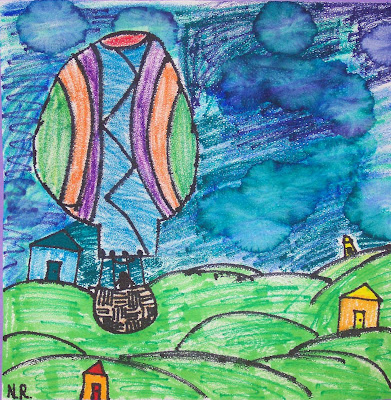
Nora gr 4
The fourth graders have

been busy creating a scene of beauty from a hot air balloon. We practiced drawing the shape that is full and round like a sphere or egg and has a narrower opening for the air to fuel the flight. I am always amazed at comparisons students will think of in discussions while we plan projects and today was just a good example of that. One student compared the balloon's form to a persons head and neck. I'd have to agree, they do have the same form. And if that helps someone think of a way to draw that form, all the better.
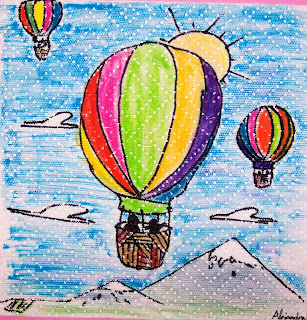
Here are some preliminary sketches they made to help know how to compose the scene on the final paper:

On the next day of class most students were
ready to start composing on the final paper. Surprise! We used embossed paper towels for a new and different texture. They drew out the balloon first and then the landscape scenery. This way if the
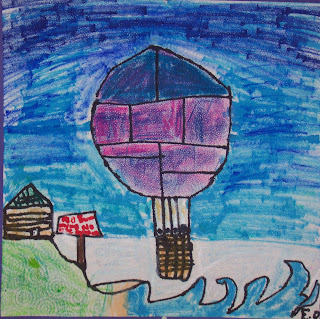
passenger basket hung below the scene it would be overlapping the landforms. From here on out it was a challenge to the artists to set up contrasts of smooth and bumpy textures. We found art media that allowed the texture of the paper towel to show. Markers, especially ones that were slightly dry were perfect in the sky for this effect. So were regular oil crayons when used with little pressure. Often the older unwrapped ones were perfect for rubbing lightly across the surface and they picked up the textures of the paper nicely.
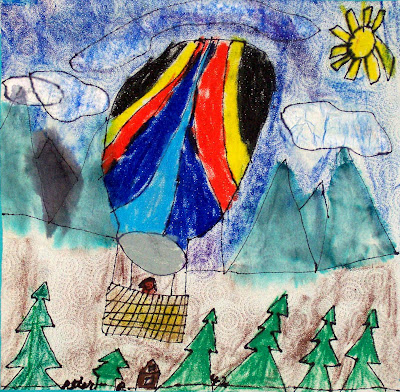
Peter gr 4
When it was time to do the smooth fabric of the balloon I introduced the oil crayons that are water soluble. My favorite brand is made by Portfolio. They are so creamy and smooth and they blend so easily with a fine mist of water from a plastic spray bottle.
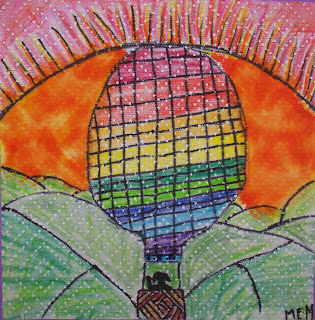
The paper towel was a bit fragile when wet, but the children were careful not to over work the project at this stage. We used an old piece
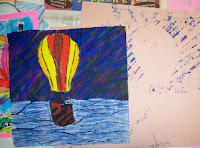
of 12x18 construction paper as a placemat to absorb extra ink and water. In fact, we had more problems with the paper clips when the works were in storage. The clips caused more rips than the damp paper. Once the paper dried it was easily patched from the backside using a small piece of paper towel and gluestick.
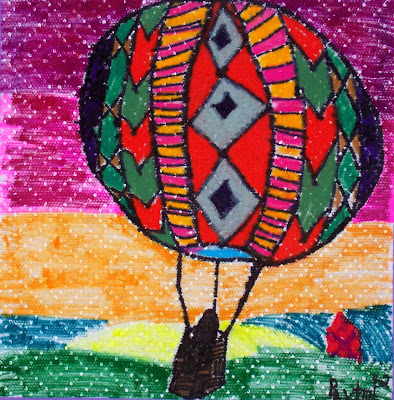
Payton gr4
I mounted everyone's work on a 12x12 square of colored cardstock. Today we had a showing of finished pieces in the artroom and those that were nearly done had additional time to get finished up. I read from an art book while the early finishers sketched and others helped themselves to the Portfolio oil crayons to put on the final touches to the balloons.

This was a new project this year and I am glad we tried it. I am now inspired to create a different lesson for my other grades so they could experience the paper towel as a painting surface.
If you'd like to view more of this series on hot air balloons, this link will take you to the
artsonia website where we have exhibited all the 4th graders balloon and landscape compositions.
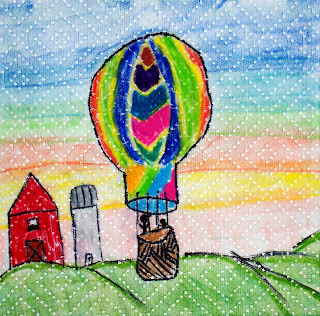








 Piet Mondrian's Composition in Red, Yellow, and Blue
Piet Mondrian's Composition in Red, Yellow, and Blue Nike Low Dunk shoes released in 2008
Nike Low Dunk shoes released in 2008





 On the next day of class most students were
On the next day of class most students were 
 Peter gr 4
Peter gr 4

 Payton gr4
Payton gr4




 Tessa gr 3
Tessa gr 3  Peter gr 3
Peter gr 3 





